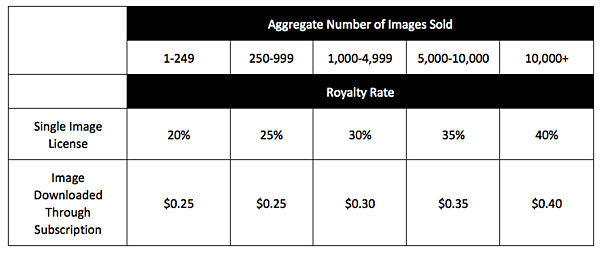Quite a bit has happened since I last wrote, two conferences and a few changes to royalties and pricing at some agencies.
Probably the big event for me was the microstockexpo which took place last weekend in Berlin, I'd like to thank everyone I meet and all those who made it possible - you know who you are! A full report is comming soon!
Crestock have anounced a tiered commission structure, the previous offer was 20% then 30% after 100 downloads. The new pricing is 20-40% as per the table below:

 Decide for yourself from the facts and figures were have collected.
Decide for yourself from the facts and figures were have collected.

